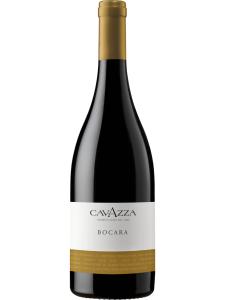Gambellara is a dry, white Garganega-based wine from the Veneto region of north-eastern Italy. The classic Gambellara wine is crisp and refreshing (thanks to Garganega's naturally high levels of acidity), with notes of lemon sherbet, almond, and an alluringly faint hint of sweet, fragrant spice. The wine is also produced in a sweet, dried-grape recioto style: Recioto di Gambellara. The Gambellara which gives the DOC its name is a town in the western edge of Veneto's Vicenza province, roughly 15 miles (25km) east of Verona.
Gambellara wines are produced in an area abutting the north-eastern side of the larger, more famous Soave zone. Gambellara was granted official DOC status in 1970, two years before Soave, but while Soave shot to fame and popularity in the 1980s, Gambellara remains a relative obscurity. This is despite the fact that two wines are made in the same style(s), from the same grape variety, and come from the same part of Italy. The disparity is partially down to the efficacy of Soave wine marketing, and its capacity to produce significantly larger volumes of wine - the kind of volume which was suddenly demanded by consumers in the USA and UK in the mid-1980s. And where the Soave vineyards cover several thousand hectares, the southern third of which are located on relatively flat and easily-manageable land, Gambellara's vines are limited largely to hillier locations.
The Gambellara viticultural zone is divided between the Chiampo valley and the hills above it. At its northern end, sub-alpine topography comes into play, as the terrain rises to more than 2000ft (610m) above sea level, several hundred meters higher than Gambellara town itself. This variation creates all manner of subtle variations in the local terroir, giving the local vignerons a certain luxury of choice when seeking out good vineyard spots. In practice, however, Gambellara has very few quality-focused producers, so site selection has generally been based purely on practical and quantitative (rather than qualitative) considerations.
A number of Italian DOCs have a demarcated classico zone (Chianti Classico is an obvious example), marking their oldest and most traditional vineyard area – typically that in use prior to the extensive DOC boundary expansions of the 1970s and 1980s. Gambellara is no exception; the boundaries of the Gambellara Classico viticultural zone are described in painstaking detail in the DOC legal documents, taking four paragraphs and several hundred words to do so. They are defined in terms of roads, lanes, altitude markers and topographical landmarks, rather than administrative boundaries. Although long-winded, this approach makes far more sense than using parish boundaries, which are drawn up with logistics, history and culture in mind rather than subtle variations in viticultural terroir. In very general terms, the finest land for making Gambellara wine is well drained, well ventilated and has a sunny aspect, most likely south-east or south-west.
Although Gambellara wines are made predominantly from Garganega grapes, Trebbiano Toscano and Trebbiano di Soave (Verdicchio) are permitted for use in small quantities. Garganega is a vigorous, prolific vine variety - a key reason for its enthusiastic uptake in the second half of the 20th century. For a long time, quantity was almost invariably prioritized over quality when it came to Gambellara wines (the same was often true in neighboring Soave and Valpolicella), but attitudes have shifted slightly and quality is steadily improving.


